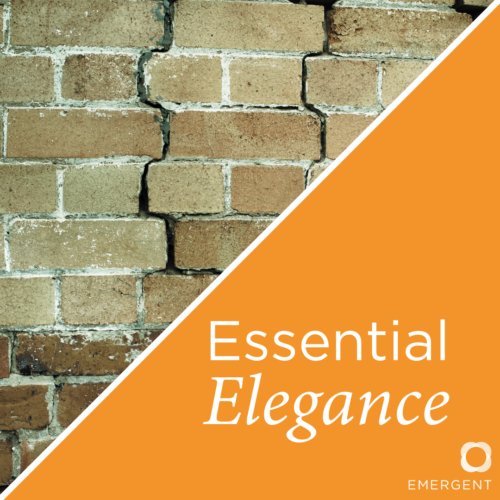A 1977 brochure introducing the Apple II computer said, “Simplicity is the ultimate sophistication.” It takes a lot of hard work to create something simple, to truly understand the underlying problem and come up with an elegant solution. It’s not just minimalism or the absence of clutter. It involves digging through the depth of complexity. To be truly simple, you first have to go deep. You have to understand the essence of a product in order to be able to get rid of the parts that are not essential. This makes sense in the context of personal computing; how many people in 1977 knew the first thing about how computers work? Precious few, and they had to create a product that was not only functional, but simple enough for the average person to use. I submit to you that we don’t just need to go deep on the products we produce, but on the life we live, the work we do, and the people we lead. If we take the time to discern the handful of essential things that we should be spending our time on, we can cut out the chaos. Through deep reflection, we can simplify our lives and make them easier to live.
In Greg McKeown’s Essentialism, he brings up an interesting point on the subject of subtraction. Chapter 16 in his book is actually titled “Subtract,” and the subtitle is “Bring forth more by removing obstacles.” This seems counterintuitive. The old-school solution to productivity was addition: move faster, get up earlier, stay up later, drink more coffee, and do more, so that you can be a higher-performing individual. But in my observations of productive people, I see more and more of them subtracting rather than adding, finding ways to reduce and focus their efforts on the simple essential few, rather than drive towards an ever increasing chaos of frenzied work. McKeown goes on to say that constraints are the obstacles holding the whole system back. Even if we can prove that everything is working well, the constraint itself is still present and working to hold improvement back. So, how do we discover the best way to move ourselves and our teams forward while also subtracting things that are holding us back? What’s getting in the way of achieving what is essential?
While the non-essentialists are busy applying more pressure and piling up more solutions, the essentialist simply makes a one time investment in removing obstacles that get in the way of the essential few. This approach goes beyond just solving problems. It’s a method of reducing efforts to maximize results. As the new year approaches, I find myself reflecting on the ways I’ve spent my energy and the ways I desire to spend my energy in the future. This year is no different, except that I am now armed with new knowledge. After reading McKeown’s book, I realized that there were going to have to be some trade offs, and not trade offs that I liked. If I could, I would do everything offered to me. The opportunities in my life, which I am blessed and grateful to have, are many and exciting. However, to be able to do any one of them with great focus and high performance, I now know that I can’t spread my energies too wide.
Heading into this new year, I’ve had to make some tough decisions around paring back on specific commitments. I’ve had to say no to things that just a year or two ago I was very excited to be a part of. And while those trade offs come with pivotal conversations and maybe even some emotional moments, I know that saying no to the nonessentials will allow me to do the essential few with that much more excellence and beauty.
So for you, my reader, I challenge you to be clear about your essential intent. Identify the things that are constraining you, keeping you from performing the most important tasks with focus and excellence. How can you remove those obstacles? What do you need to say no to? Ask yourself these questions as the new year comes knocking. Make like a pilot and observe your life from 30,000 feet. Ask yourself, What are the essential few things that I know I must be about? How might learning to say no to nonessential tasks help me focus on the new and better? Not the more and many, but rather the deeper and brighter.
Steve Jobs, the Apple visionary, said that he was more proud of what his company had said no to doing than what they had said yes to doing. It was in their simplicity, in their devotion to the focused, simple product, that they found their beauty and excellence, and in the end, a rejuvenated vision and legacy. Where will you find yours this week? This month? This year?
If you are interested in making 2024 a year of elegant simplicity, send me an email at jeremiah@getemergent.com. I’d be happy to help.

Comments (0)